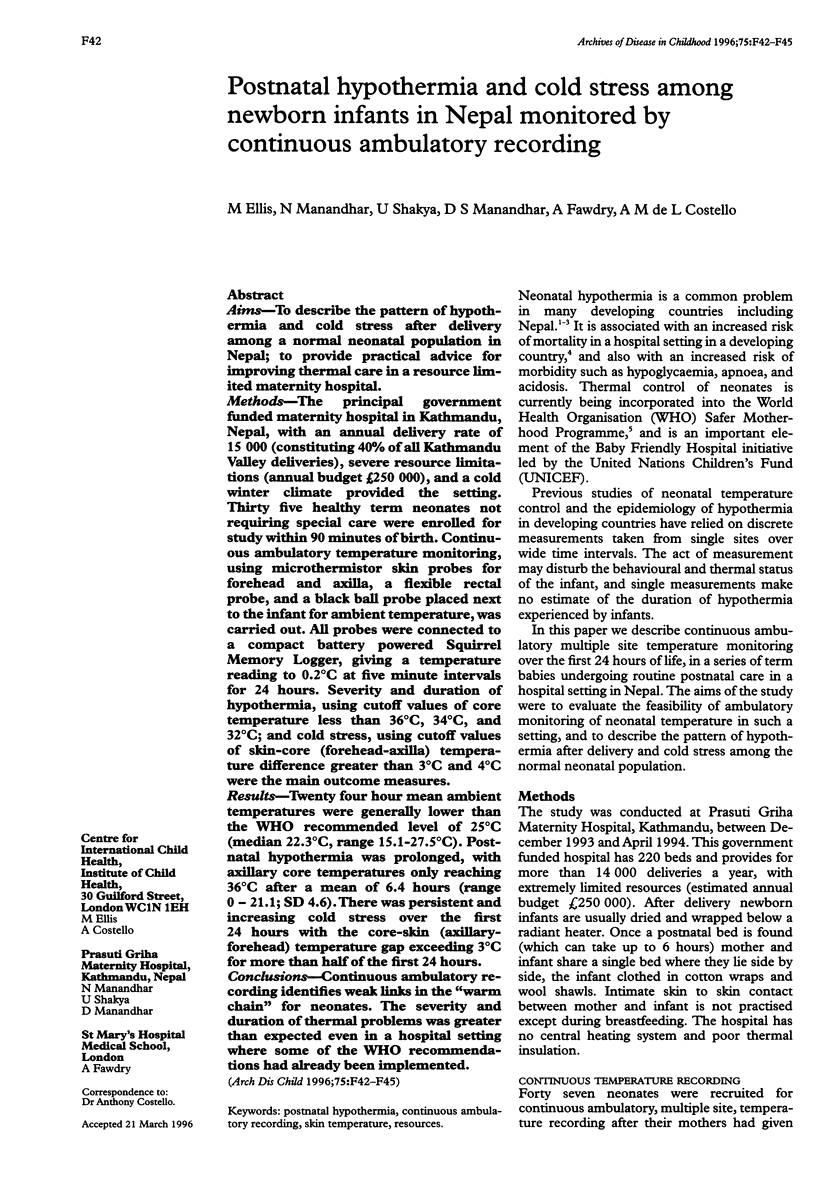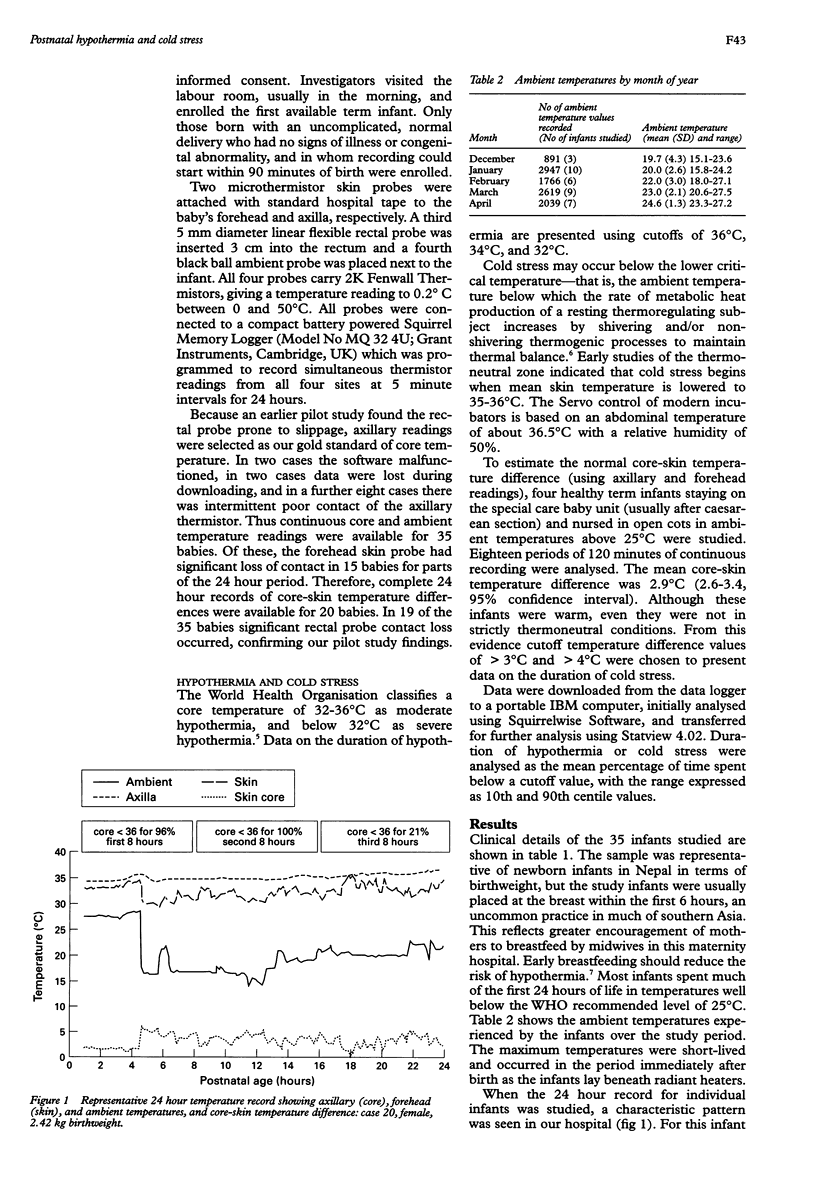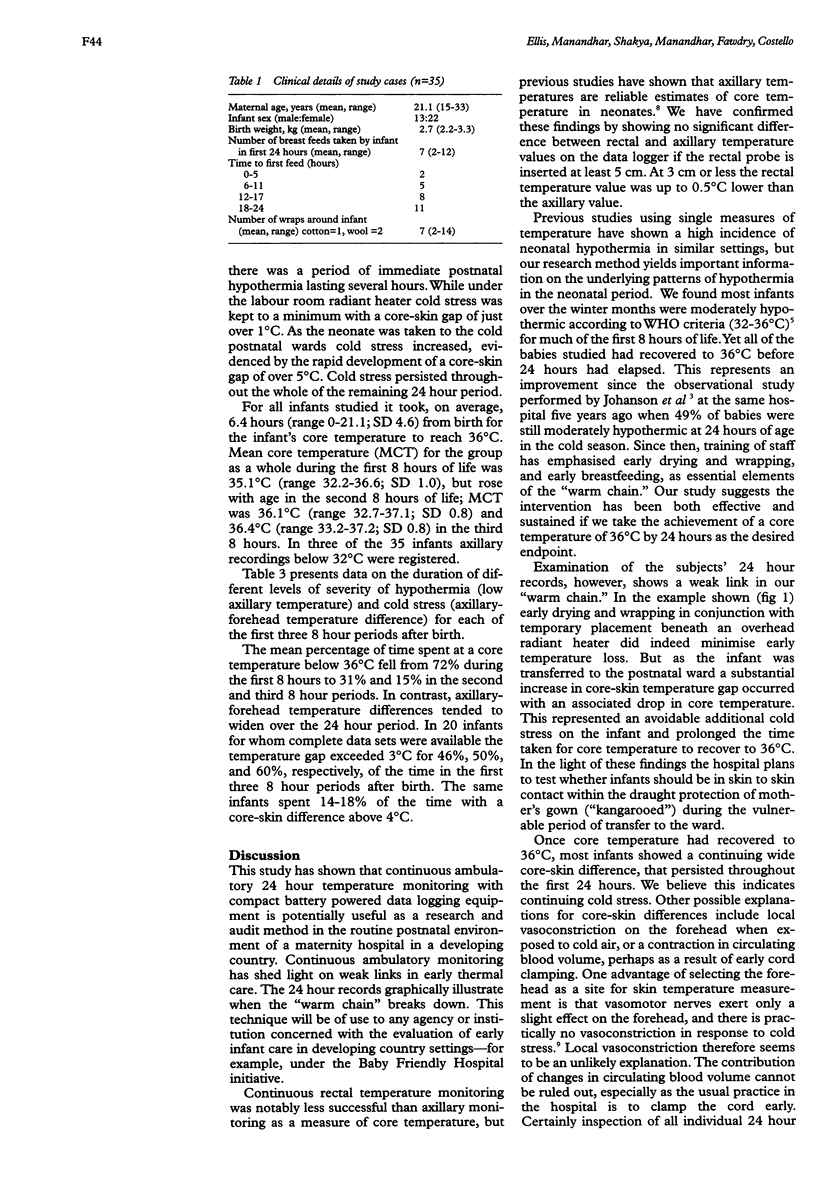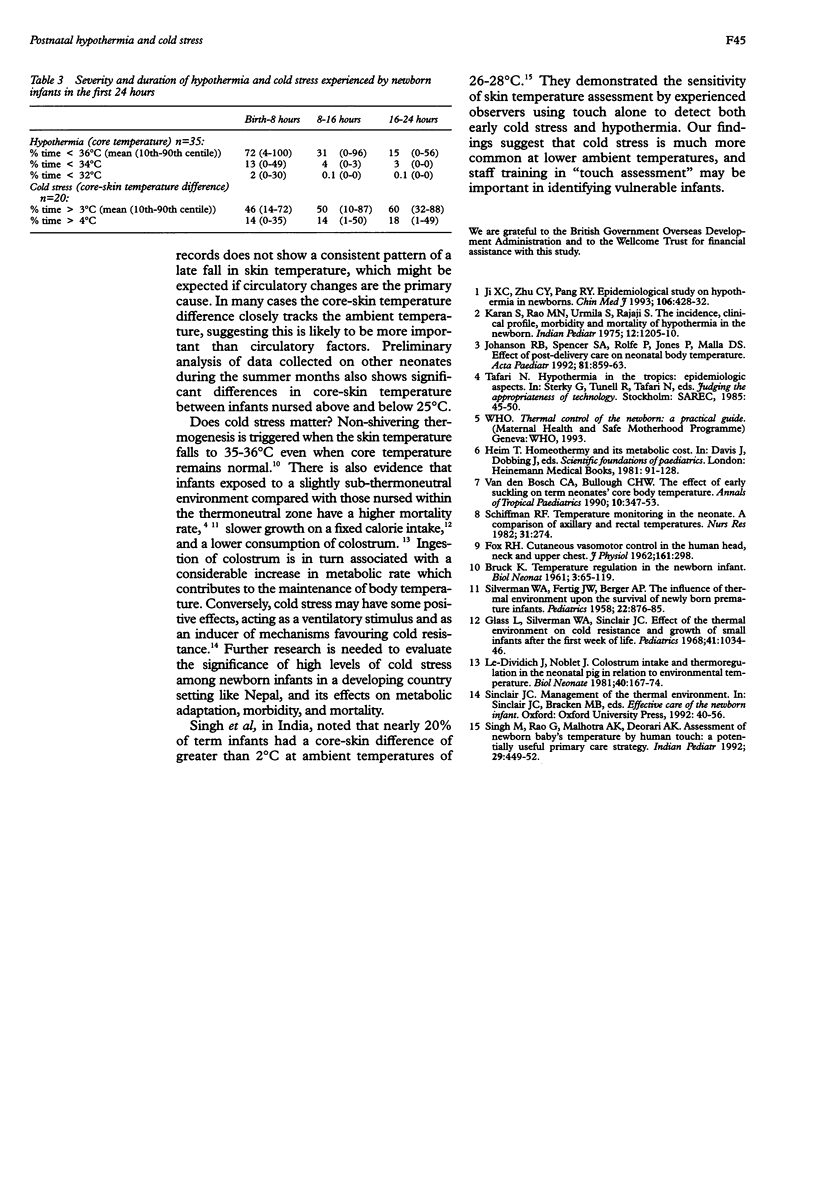Abstract
AIMS: To describe the pattern of hypothermia and cold stress after delivery among a normal neonatal population in Nepal; to provide practical advice for improving thermal care in a resource limited maternity hospital. METHODS: The principal government funded maternity hospital in Kathmandu, Nepal, with an annual delivery rate of 15,000 (constituting 40% of all Kathmandu Valley deliveries), severe resource limitations (annual budget Pounds 250,000), and a cold winter climate provided the setting. Thirty five healthy term neonates not requiring special care were enrolled for study within 90 minutes of birth. Continuous ambulatory temperature monitoring, using microthermistor skin probes for forehead and axilla, a flexible rectal probe, and a black ball probe placed next to the infant for ambient temperature, was carried out. All probes were connected to a compact battery powered Squirrel Memory Logger, giving a temperature reading to 0.2 degree C at five minute intervals for 24 hours. Severity and duration of hypothermia, using cutoff values of core temperature less than 36 degrees C, 34 degrees C, and 32 degrees C; and cold stress, using cutoff values of skin-core (forehead-axilla) temperature difference greater than 3 degrees C and 4 degrees C were the main outcome measures. RESULTS: Twenty four hour mean ambient temperatures were generally lower than the WHO recommended level of 25 degrees C (median 22.3 degrees C, range 15.1-27.5 degrees C). Postnatal hypothermia was prolonged, with axillary core temperatures only reaching 36 degrees C after a mean of 6.4 hours (range 0-21.1; SD 4.6). There was persistent and increasing cold stress over the first 24 hours with the core-skin (axillary-forehead) temperature gap exceeding 3 degrees C for more than half of the first 24 hours. CONCLUSIONS: Continuous ambulatory recording identifies weak links in the "warm chain" for neonates. The severity and duration of thermal problems was greater than expected even in a hospital setting where some of the WHO recommendations had already been implemented.
Full text
PDF



Selected References
These references are in PubMed. This may not be the complete list of references from this article.
- FOX R. H., GOLDSMITH R., KIDD D. J. Cutaneous vasomotor control in the human head, neck and upper chest. J Physiol. 1962 May;161:298–312. doi: 10.1113/jphysiol.1962.sp006887. [DOI] [PMC free article] [PubMed] [Google Scholar]
- Ji X. C., Zhu C. Y., Pang R. Y. Epidemiological study on hypothermia in newborns. Chin Med J (Engl) 1993 Jun;106(6):428–432. [PubMed] [Google Scholar]
- Johanson R. B., Spencer S. A., Rolfe P., Jones P., Malla D. S. Effect of post-delivery care on neonatal body temperature. Acta Paediatr. 1992 Nov;81(11):859–863. doi: 10.1111/j.1651-2227.1992.tb12123.x. [DOI] [PubMed] [Google Scholar]
- Karan S., Rao M. N., Urmila S., Rajaji S. The incidence, clinical profile, morbidity and mortality of hypothermia in the newborn. Indian Pediatr. 1975 Dec;12(12):1205–1210. [PubMed] [Google Scholar]
- Le Dividich J., Noblet J. Colostrum intake and thermoregulation in the neonatal pig in relation to environmental temperature. Biol Neonate. 1981;40(3-4):167–174. doi: 10.1159/000241486. [DOI] [PubMed] [Google Scholar]
- SILVERMAN W. A., FERTIG J. W., BERGER A. P. The influence of the thermal environment upon the survival of newly born premature infants. Pediatrics. 1958 Nov;22(5):876–886. [PubMed] [Google Scholar]
- Schiffman R. F. Temperature monitoring in the neonate: a comparison of axillary and rectal temperatures. Nurs Res. 1982 Sep-Oct;31(5):274–277. [PubMed] [Google Scholar]
- Singh M., Rao G., Malhotra A. K., Deorari A. K. Assessment of newborn baby's temperature by human touch: a potentially useful primary care strategy. Indian Pediatr. 1992 Apr;29(4):449–452. [PubMed] [Google Scholar]
- van den Bosch C. A., Bullough C. H. Effect of early suckling on term neonates' core body temperature. Ann Trop Paediatr. 1990;10(4):347–353. doi: 10.1080/02724936.1990.11747456. [DOI] [PubMed] [Google Scholar]


